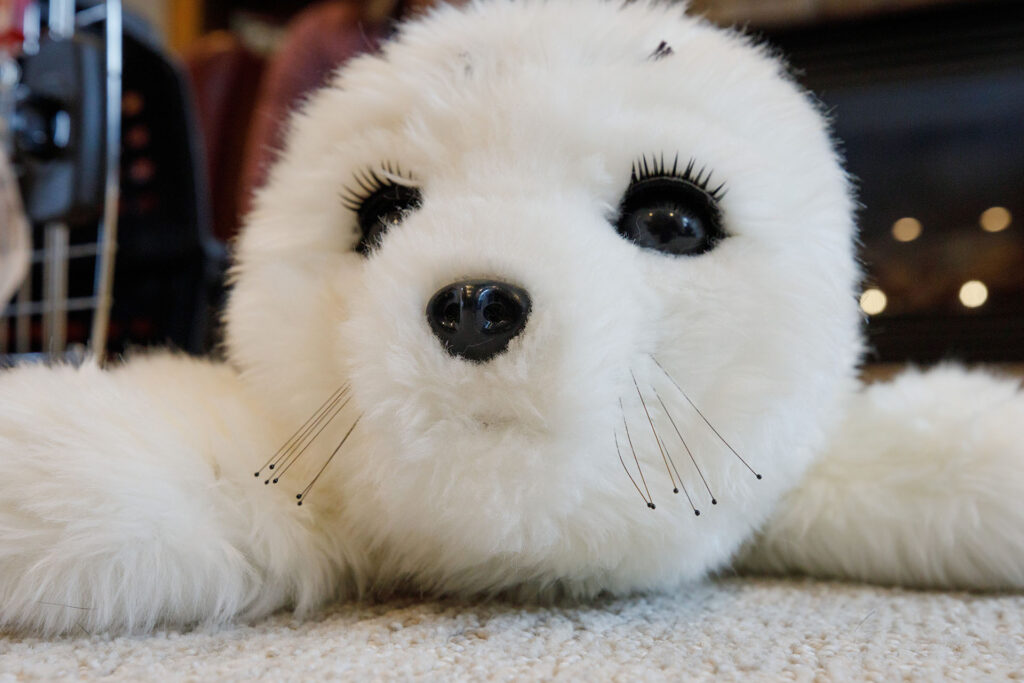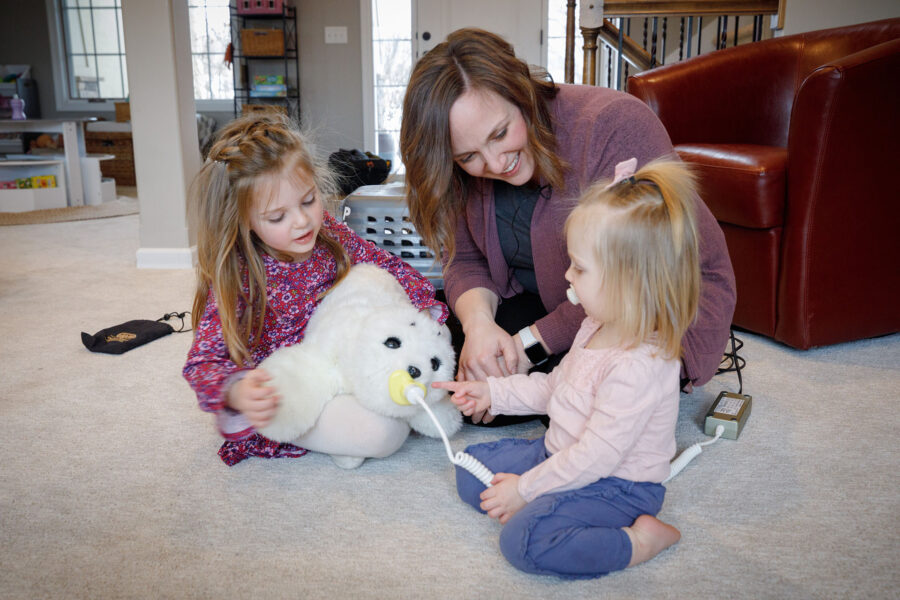Breanna Hetland, PhD, assistant professor of nursing, looks at a breakthrough intervention for hospitalized pediatric patients from two perspectives:
“I’m a scientist, so I need to figure out how it works,” she said. That’s one side of it.
“But as a mom,” she said, “I don’t care. It works. These kids move, and they smile.”

She’s talking about Paro, the therapeutic robotic seal. Paro and her fellow seals, Pickles and Pepe Le Pew, see patients at UNMC-Nebraska Medicine and Children’s Nebraska. These seals and their patients also are part of ongoing research.
Don Coulter, MD, Ittner Chair of Pediatric Hematology and Oncology, and Holly Roberts, PhD, of the Munroe-Meyer Institute Department of Psychology, are co-investigators joining Dr. Hetland in trying to find out how the robotic seals work.
But moms, like Dr. Hetland, already can tell you: It certainly appears that they do work.
It’s long been conventional wisdom, since backed by science, that animal-assisted interventions can promote human well-being not only at home, as with pets, but in medical and therapeutic settings.

“Many institutions have pet therapy programs,” Dr. Hetland said. “They are great. Animals can come in and do a lot of rehab with kids. But they are expensive. There is a lot of coordination involved, a lot of regulation.”
As in, do not bring that live animal into an ICU.
But an interactive robotic animal might be able to provide similar benefits.
That’s part of what UNMC, Children’s and others are studying. Could Paro serve as an equivalent to animal therapy while using fewer resources?
Paro’s manufacturers said it has tactile, light, audition, temperature and posture sensors, and the seal is programmed to respond with noise and movement based upon those cues.
It’s adorable – with a purpose.
Pediatric patients taking part in the study must have a consult for physical therapy, occupational therapy or speech therapy while in the hospital.
The seal may help with fine motor skills as the kids brush its fur or dress it in a superhero outfit.
Kids unable to speak or who need to work on their speech may be asked to read to the seal. The team even created a book about Paro going around the hospital.
Team members design interaction activities with the seal to improve speech, memory, fine-motor skills, balance and endurance, self-esteem and sensory stimulation.
“We try as much as we can to tailor the seal to the therapy and the needs of the kids,” Dr. Hetland said.
One of Dr. Hetland’s favorite interactions was a child who was day two of post-op, refusing to move, still very upset, crying. Then a team member brought the seal into the room. “He looked at it and asked his mom for his shoes and socks,” Dr. Hetland said.
Given the chance to interact with the seal, “He said, ‘Mom, I want to do that,’ and proceeded to walk several laps around the unit.”
The team consulted with Mark Rupp, MD, chief of the UNMC Division of Infectious Diseases, on infection control and proper cleaning of the seal.
Every study participant gets a stuffed seal to take home.

This is the most wonderful project and the Child Health Research Institute (CHRI) and the Pediatric Cancer Research Group (PCRG) are proud to support Dr. Hetland’s investigative efforts in this realm.
Great work, Dr. Hetland!
I have some concerns about Pepe…sounds like a skunk…but if you promise he’s friendly, I’m good with it. Great work Dr. Hetland…and nice to be able to pilot test at home.
Dr. Hetland’s innovative work and contributions continue to amaze!